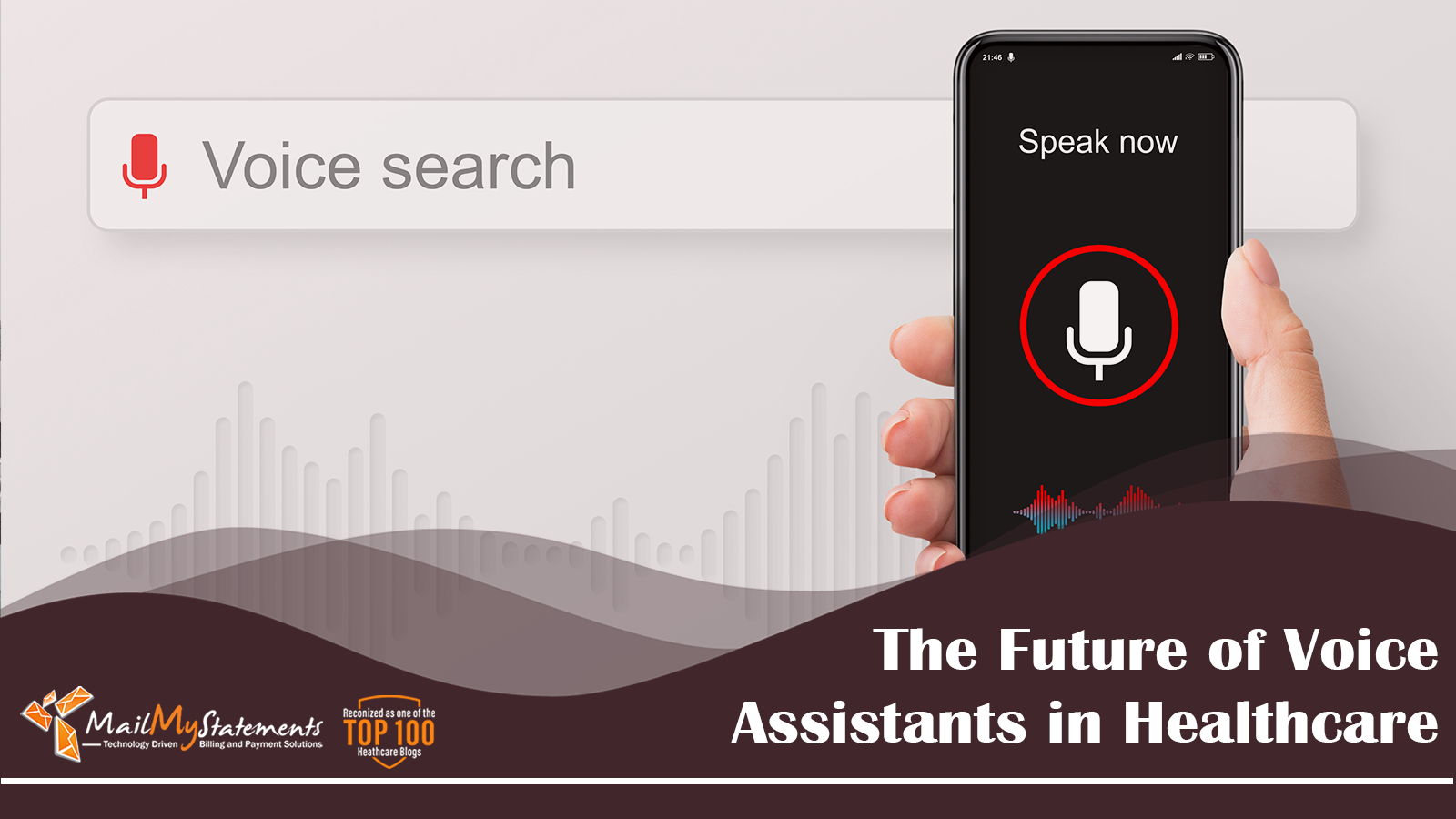The Future of Voice Assistants in Healthcare

Most of us have become accustomed to using voice assistants since it debuted on our smartphones with Siri, followed by Alexa and Google Home voice assistant devices.
A recent study conducted by NPR and Edison Research found that one in four households in the United States has a “smart speaker” that provides voice assistant technology for everything from turning lights on and off, adding appointments and reminders to the calendar, and even controlling home security systems.
The Application of Voice Assistants in Healthcare

Healthcare systems, including hospital systems and their related outpatient clinics and ancillary services, identified this technology as something that could improve efficiency and productivity by allowing providers to spend less time on paperwork and more time on patient care. Epic Systems Corporation has taken the lead in developing this technology and integrating it with the 2014 mandate in the Patient Protection and Affordable Care Act (PPACA), which required providers to make the transition from paper to electronic medical records.
Epic is now the preferred electronic medical record system used by more than 250 healthcare organizations nationwide, including Johns Hopkins. Nearly 50 percent of all Americans now have their medical records managed by a system developed by Epic. Today, providers across the country can just say “Hey Epic!” to utilize Epic’s Haiku app. The integrated voice assistant allows physicians to:
- Find patients in the system
- Access patient lists
- Access their outpatient schedule
- Search the database for patients who are not on the list or schedule
- Review and update patient information
- Keep up-to-date on medications, allergies, immunizations, medical history, or the problem list
- View reports about outpatient encounters, including diagnosis and orders
- View reports on inpatient encounters, including admission notes, vitals, active orders, and discharge
- Review previous encounters
- Review patient results, including labs and imaging, and look at new or abnormal results immediately
- Read and reply to Staff and Results messages from the InBasket
- Mobile ordering
- Integrated speech-to-text for licensed clinicians
Voice assistant technology can increase efficiency for administrative tasks such as billing, claims management, and inventory. Improved efficiency in these areas results in cost savings and revenue boosts.
Further, a natural progression is the development of ways to use voice assistant technology as a tool for patient care by opening direct lines of communication between the healthcare provider and the patient or their caretaker.
Voice assistant technology in the inpatient setting can take the place of the outdated nurse call systems activated by pressing a button at the bedside. “What is my diet, when is dinner, please send a nurse, I need help getting to the bathroom, when can I get more pain medication” are common patient requests. The outdated call button results in long waits for hospital staff to appear at the bedside, frustrating the patient and potentially delaying important medical interventions for other patients.
A nurse responding to a patient’s room to answer a simple question takes that caregiver away from other patients who may have more urgent critical needs. The ability to respond quickly with a voice interaction can reduce patient frustration and free up staff for hands-on care. This can help healthcare executives address critical staffing ratios, which can reduce costs.
Meaningful outcomes for an aging population
The U.S. population is aging. Currently, more than 46 million adults in the United States are 65 or older, a number expected to nearly double in the next 30 years. Seniors and their families want them to be able to age in place, i.e., to continue living in their home for as long as possible. Many seniors receive home healthcare services for adherence and compliance with medications and other routines at home. Voice assistant technology can be integrated into home healthcare to monitor patient activities and alert caregivers if there is an issue requiring personal intervention. Additionally, these same technologies are useful for patients of any age dealing with chronic illness or recovering from surgery.
As reimbursement rates from health insurance companies, Medicare, and Medicaid programs go down, improved efficiency through technology can reduce costs.
What About Privacy?
Much of the delay in integrating these systems into healthcare settings was caused by the real and perceived roadblocks of patient privacy and compliance with the requirements of the Health Insurance Portability and Accountability Act of 1996 (HIPAA). The technology must be robust enough to avoid Protected Health Information (PHI) being compromised for efficiency. The obstacles have been overcome.
Concerns about privacy are not only regulatory. Although voice assistants are widely available to the public, some patients may have a cultural or inherent fear of using technology that they associate with “Big Brother” and may take longer to adapt. However, most of them can come around when worked with over time. Their confidence will build, and they’ll see how the advantages outweigh their perceived concerns.
The Learning Curve

There is a learning curve for users on both ends of the technology—providers and patients. Voice assistants should add value to the healthcare experience, not make it more intimidating or complicated. Interactions should be simple and straightforward and not take more than one or two voice interactions to provide a real response. The algorithms must include a point at which they summon a nurse or another caregiver instead of prolonging a voice interaction that isn’t helping and may delay an important healthcare intervention or cause great frustration to the patient. In other words, implementation is a process requiring patience on both sides.
As virtual and voice assistant technology becomes more widely available, it will evolve into more sophisticated healthcare applications, such as diagnosing and making decisions or recommendations for intervention by a healthcare provider.
Voice Assistant Technology Fueled By the Pandemic
The COVID-19 pandemic changed our lives in 2020 and beyond. With hospital beds filling up and people unable or unwilling to visit their doctors in person, the need for alternative methods of communication has been magnified. The heightened importance of new voice assistant technology may be a silver lining to the tragedy of the pandemic, increasing the rate at which these technologies are incorporated into healthcare delivery systems during the crisis and into the future.
Final Thoughts
MailMyStatements is a technology-driven patient statement and payment vendor that offers managed billing needs from payment plan capabilities to statement design. Get in touch with us today to learn more about our various solutions to help increase patient collections.
![]()



